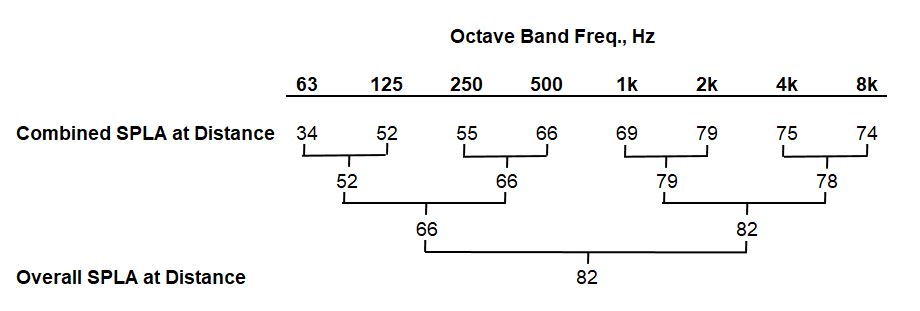In part 1 of this series, we covered the key terms used in our acoustic calculations. In this second part, we will apply the science of sound to an actual project that I worked on for a gas pipeline customer.
Project Requirements
Our customer had an overall maximum SPL limit of 50 dBA at 50 ft from the building. That means that after designing the ventilation system for the building, the combined noise level of the interior noise sources and the fans used in our system needs to be less than the maximum.
Acoustic Calculations
The first step in our acoustic calculations is to combine the predicted interior noise SPL with that of the fan that we selected for the ventilation system. The customer provided the predicted interior noise SPL at the fan opening in the building wall as:

The supply fan that we selected has the following noise profile:

To combine the SPLs from two sources, we compare the SPLs at each octave band and depending on the difference, we add a factor to the highest value:

Here is the combination calculation for our two sound sources:

The next step is to adjust the SPL for the A-weighting and divergence to determine the dBA at 50 ft:

The final step is to determine the overall SPLA to see if we are under the maximum. The simplest way to do that is to start by combining two adjacent octave bands and based on the difference, add a factor. We continue combining until we have one overall number:

The overall SPLA of the two combined sound sources at the distance of 50 ft is 82 dBA which exceeds the maximum dBA of 50. We will need to apply some sound reduction techniques to bring the overall SPLA under the maximum. In part 3 of this series, I’ll discuss what we did to reduce the noise level and how we calculated the final overall SPLA.
